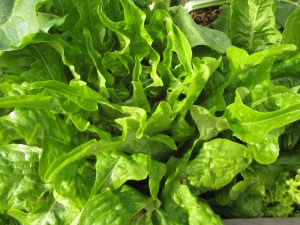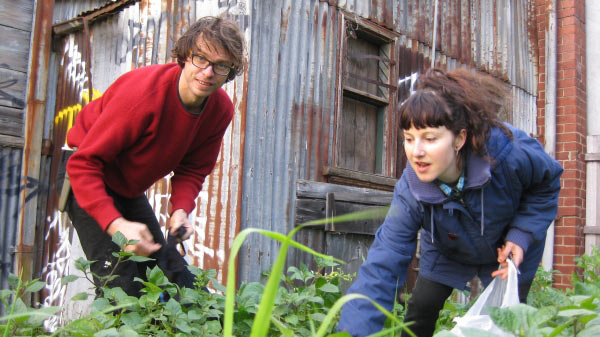 Lactuca Sativa
Lactuca Sativa
Family: Asteracea
One of the world’s most popular vegetables of which there are thousands of varieties. Lettuce is a temperate annual and sometimes biennial and is a member of the daisy family Asteracea.
Varieties
Varieties are broadly grouped into these 5 categories:
Butterhead – which is very popular in Europe and forms a soft and loose texture with generally mild flavour. It is semi-heading and more tasty than crisphead.
Cos – (from the Greek island of Kos) also called Romaine is a mostly head forming type with elongated leaves. They have a piquant flavour and are used in Caesar salad.
Iceberg or Crisphead – forms a tight and dense head like a cabbage and have the mildest flavour. These are used more for the crunchy texture and are by far the most consumed lettuce variety on Earth thanks to the hamburger and fast food industry.
Looseleaf – has delicate and mild flavoured leaves. It is the easiest and least demanding lettuce to grow in home gardens. Commonly used varieties are oak leaf and lollo rosso.
Summer Crisp – form moderately dense heads and are somewhere between looseleaf and crisphead.
Almost all of these lettuces can be found in colours other than a regular green.
Health and Nutrition
Lettuce is very good for digestion and promotes good liver function. It can reduce the risk of heart attacks and is good for healthy eyesight. It has good levels of Vitamin C, beta-carotene and fibre. Lettuce obviously will not lead to weight gain as many varieties consists of over 90% water and is extremely low in calories.
Lettuce can also be used as a sedative: its milky juice has been used as a sleep tonic for thousands of years.
Cultivation
Growing in raised beds prevents root rot. As all leafy vegetables respond well to nitrogen-rich fertilisers, it is wise to have a good dressing of animal manure. (If using chicken manure, don’t put it on too fresh as it is very ‘hot’ on young plants). Sow densely in shallow drills. Thin the weaker seedlings out gradually so as not to crowd your “keepers”. The “keepers” are the strongest and healthiest and quick growing plants – you want to hold on to your best genetic stock for seed saving or to develop your own lettuce adapted perfectly to your own climate. All seedlings removed can be used as salad greens.
Lettuce grows slowly over the two or three months of winter cold, and the plant endive can be grown instead for these harsher times. One of the keys to growing lettuce well at home is to sow seeds every two weeks or so, therefore making sure you always have a good supply, as they do not store particularly well.
Lettuce prefers cool weather. When temperatures are consistently above 20°C there may be a tendency for your lettuces to bolt to seed, leaving a more bitter leaf on the stalk. For growing in summer provide some shade.
As lettuce is shallow rooted it will require regular inputs of water but with reasonable drainage. The best lettuce is that which grows quickly so be sure to water and fertilise.
Pests and diseases
Aphids, caterpillars, and nematodes are the most common pests.
A fungal disease chocolate spot is one of the main diseases they suffer from.
We use natural sprays and biologically rich soil improvers to ward off these problems.
Uses and recipes
Best eaten within minutes of picking for maximum crispness and nutrition. However, pick it early in the morning on hot days before wilting begins. If you forget you can rehydrate wilted afternoon lettuce by resting it in water for half an hour.
Use lettuce as a wrap for vietnamese-style rolls. Or serve spicy mexican rice and beans in a lettuce leaf cup. Mix it with pears, raspberries, blue cheese and walnuts for a delicious salad.
Trivia
The Yadizi of Northern Iraq have taboos against both wearing the colour blue and eating lettuce. With respect to their religious beliefs, their relatively small global population (there are fewer than one million Yadizi) suggest that refusing lettuce is not a good cultural survival strategy. By comparison, US citizens, who’s cultural practices include the wearing of blue denim leg wear and consuming vast amounts of lettuce in the form of hamburger filling, now number over 250 million.



